Wood glue drying time is essential when deciding how to attach wood pieces. No one wants to take forever to complete a project, so a quick drying time would come in handy in any woodworking project.
But, how long does wood glue take to dry? While a good glue can provide a strong adhesive for attaching wood pieces, inadequate drying can affect the quality of its bond.
This article will examine;
- How does wood glue work
- How long does PVA glue take to dry.
- How fast does wood glue dry
- Ideal Wood glue temperature range
- How long does titebond wood glue take to dry
- How long does it take wood glue to dry, set and cure
- The factors likely to affect the drying time of your selected glue and how to make it dry faster.
Let’s dive right in;
How long does wood glue take to dry?
It takes 24 hours for wood glue to cure before unclamping the attached pieces. Wood glue dry time is from 20 minutes to as long as several hours. This drying time depends on the glue type and brand. Temperature, wood type, and moisture levels will also affect the drying time.
Even the fastest drying wood glue can take longer to dry if the conditions of humidity, temperature, and wood type are suboptimal.
The general rule of thumb is to let freshly applied wood glue dry for a minimum of 24 hours before unclamping the attached pieces. Some people in woodworking circles may find this timing overkill, but it is always safer to err on the side of caution.
Some wood glue brands have specific recommendations for their products.
For instance, Titebond recommends clamping unstressed glue joints for at least 30 minutes to one hour. The brand recommends up to 24 hours of clamping for a stressed joint for the best results.
Ideally, a small bond with just a tiny amount of glue may dry more quickly than large adhesion projects requiring more time to secure.
When choosing wood glue, you may be tempted to go for brands that have a reputation for drying quickly, but many of these may not provide strong bonding qualities.
It’s better to consider a glue that will create a strong bond, even if you must wait a little longer for it to dry.
Wood Glue Dry Time vs. Cure and Set Time
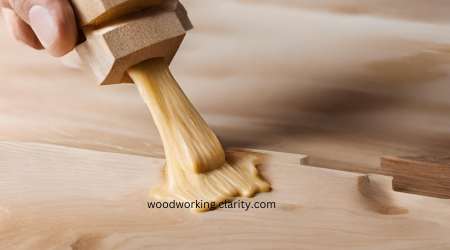
In woodworking, drying and curing may be used interchangeably, but the two concepts aren’t the same.
When referring to wood glues, drying means becoming strong enough to hold without the support of the clamps. When you can remove the clamps on an attached joint, you can say the glue has dried.
On the other hand, curing of wood glue takes longer to happen. So, how long does wood glue take to cure?
Wood glue cure time
Most wood glues require 24 hours to fully cure. Glue is cured when it has reached the state where the bond is at its strongest. Stronger than the surrounding wood.
Often, wood glue will dry long before it fully cures.
Wood glue set time
Wood glue setting time is the time it takes for wood glue to create a bond of adequate strength between the wood pieces it joins together. A glue is considered set when it has noticeably hardened.
At this point, any exposed parts of the glue usually have formed a solid skin over it.
How long for wood glue to set?
The set time for wood glue is the duration it takes to change from liquid to solid. The average set time for most glues is around 15 minutes to half an hour.
Glue isn’t necessarily dry when it sets. The drying time is generally longer than the set time.
The latter refers to the duration it takes for the glue to become stiff and strong enough to hold the attached pieces together without the help of clamps.
In other words, the glue has dried when you can remove the clamps without the joined pieces coming apart.
Still, the project may not be ready to go into full service immediately after the glue becomes dry.
You may want to allow it more time to cure completely before putting the whole thing to full use. Wood glue reaches its maximum hardness when it has cured.
Cure time can vary depending on the glue and other external factors. Ideally, it can take anywhere from 24 hours to several days.
Recommended Reading: How to join two pieces of wood side by side
Different Types of Wood Glue—How Long they Typically Take to Dry
The wood glue market has numerous varieties to choose from. Each of these products has its strengths and limitations that can better your experience or break it. The various wood glue options also have varying drying times.
In general, Cyanoacrylate wood glues, or CA, are the fastest drying of all varieties, taking only seconds to set. They also cure and reach full strength in just about eight hours.
In contrast, Polyvinyl Acetate, commonly referred to as PVA wood glue, dries slowly, taking about 10 to 15 minutes to set. These glues may take more than 24 hours to harden fully and cure.
The majority of glue types take about the same time as PVA to set, as you will see in this section.
1. Polyvinyl acetate glue
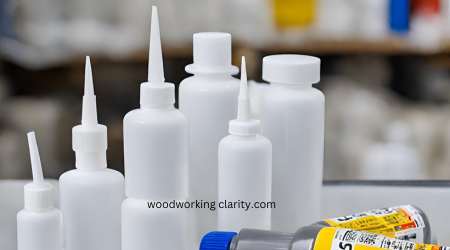
Often referred to as PVA, Polyvinyl Acetate is the strongest glue for furniture. It is specifically formulated to penetrate the wood’s pores and grain to enhance its adhesiveness.
This mechanism ensures that wood joined together using a PVA glue forms a strong bond that can be better than nailed joints. This glue is designed to work for a wide range of materials; you can use it to attach cardboard, paper, wood, and other materials.
A PVA wood glue is a modified version of the standard PVA craft glue. They both have polyvinyl acetate polymer in their formula, though the wood glue has a few additional modifications that make it well-suited to the woodwork role.
For instance, this wood glue sets faster and forms a stronger bond than the standard PVA craft glue due to these modifications.
How long does pva glue take to dry? PVA glue drying time ranges from 10 to 30 minutues. And 18 to 24 hours to completely cure.
PVA wood glues are available in faster drying and slow-drying options. The faster drying types need about 10 minutes to dry, while the slower-drying options take up to 25 to 30 minutes to dry.
In any case, a PVA glue will require at least 24 to cure and reach its strength.
2. Cyanoacrylate wood glues
Cyanoacrylate, or CA wood glues, are better known as super glue or instant glues due to their super-fast drying times. These adhesives are set in a matter of seconds and form strong bonds in minutes.
A superglue can set in less than 30 seconds to create a strong initial bond for wood or other material. It, however, requires about 8 hours to achieve its full strength.
While these glues cure pretty fast and can speed up your project timeline, the bond they form is never something you want to rely on as a permanent solution.
Instead, woodworkers typically use CA glues to provide a temporary bond to be completed by fastening soon afterward.
Cyanoacrylate glues aren’t as strong as PVA glue or epoxy when dry. For this reason, they are typically set aside for fixing inlays and repairing small wood chips.
You can also use superglue as a crack filler by mixing it with sawdust. The glue dries by drawing in moisture from the air around it, emitting a temporary, characteristic stench while forming the bond.
CA glues are available in various thicknesses, so you can choose based on the project you want to use them on. Thicker variants are often useful for attaching wood pieces and for gap filling.
3. Aliphatic resin wood glues
Aliphatic glues are another form of modified PVA glue. Therefore, they feature the same polyvinyl acetate polymer as standard PVA craft glues in their formula.
The Aliphatic resin glue can also be referred to as yellow glue or carpenter’s glue. They get their yellow glue moniker from the yellow color that most varieties assume when dry.
Other varieties of this glue tend to be brown when dry, but they are the same product.
Aliphatic resin glues have the same drying times as PVA wood glues because they have the same basic formula. You need to clamp the standard varieties for 10 to 15 minutes, but the slower-drying options require more drying time—up to 25 to 30 minutes.
Like PVA glues, aliphatic glues take approximately 24 hours to cure and reach full strength.
4. Polyurethane glue
If you are familiar with Gorilla Glue, you are familiar with polyurethane glue. This glue typically expands while drying to form a super-strong bond for joining surfaces.
Therefore, you will typically need to clean the excess glue and sand off the excess when dry when used.
This waterproof glue is multi-purpose and can be used on metals and wood. Because polyurethane glue is mostly waterproof, they are an excellent option for outdoor joinery projects.
These glues are available in fast and slower-drying varieties. The faster drying options have typical drying times between 10 and 15 minutes, while the slower varieties can take 30 minutes or longer to dry.
It is recommended that you keep a polyurethane glue clamped for a minimum of two hours for a strong bond. Most varieties will then take 24 hours to cure completely and reach full strength.
5. Epoxy glue
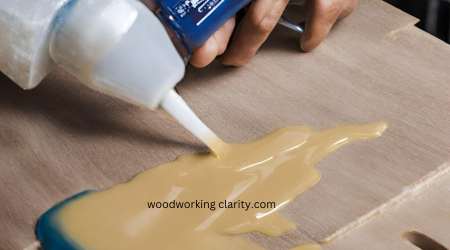
Epoxy is a common adhesive in woodworking circles. It uses resin and a hardener to create a powerful bond that can replace other mechanical ways of attaching wood.
Once mixed, the hardener and resin form the epoxy glue.
Epoxy can be used as a filler for wood gaps and an adhesive for attaching pieces of wood. It is waterproof and therefore suitable for outdoor projects.
Wood epoxies are available in several different types, with the most popular being the resin-and-hardener combo.
While epoxies may be known for use on wood, they are formulated to bond various materials other than wood. Their excellent resistance to water and chemicals makes them ideal for use in various environments and outdoor applications.
The drying time for epoxy glue can be as little as one minute for the rapid setting variants reaching full strength in well under ten minutes.
Slower drying alternatives can take up to 30 minutes to dry, just like most slow-drying wood glues discussed in this article. Most epoxy glues take about 2 hours to cure and reach full strength.
6. Hide Glues
As the name suggests, hide glue is made from animal hides. This is the only glue type made from natural ingredients and the result of many years of research, trials, and tests to develop a working formula.
This glue isn’t waterproof and, therefore, unsuitable for use on outdoor projects. However, the natural formula means that hide glues are non-toxic and safe for the environment.
Hide glues are relatively fast drying, considering their natural formula. They are typically set and dry enough to be unclamped in 20 minutes.
However, as most glues discussed, liquid hide glue takes approximately 24 hours to reach full strength.
When using hide glue, you can skip clamping. Instead, you put hot hide glue on both surfaces and rub them together a couple of times until the joint stops moving.
7. Hot glues
Hot glues are also referred to as hot melt adhesives. They are available in the form of a stick that must be melted by pushing it through a hot glue gun nozzle.
Most woodworkers stay away from hot glues because they tend to melt and return to liquid when heated.
Their poor heat resistance puts them at a significant disadvantage for serious woodworking projects that may be subjected to various temperature conditions.
In any case, hot glue can be set in less than one minute, depending on the amount of adhesive used. In addition, the glue often requires only about five minutes to cure and reach full strength.
Factors Influencing Wood Glue Drying Times
Various types of wood glue have different drying times. However, the type of glue you are using isn’t the only factor to determine how long it takes to set and cure. Several factors come into play and influence the wood glue dry times. Let’s have a look.
– Temperature
Temperature is a crucial factor in any drying process. Most wood glues will dry faster in high-temperature environments, setting and creating the desired strong bonds within the least amount of time possible.
On the other hand, low temperatures may cause you to wait for long as wood glues tend to dry slowly under low temperatures.
While high temperatures may accelerate the drying of wood glues, it can also cause certain types of glue to melt when it peaks too high. Thankfully, most wood glue varieties are resistant to high temperatures and won’t melt upon contact.
You can see below the ideal operating temperature for the top 5 most commonly used wood glues.
| Wood Glue Type | Ideal Temperature Range |
| Polyvinyl Acetate (PVA) | 50-77°F (10-25°C) |
| Polyurethane | 50-95°F (10-35°C) |
| Epoxy | 41-95°F (5-35°C) |
| Animal Or Hide | 120-150°F (48-65°C) |
| Cyanoacrylate (CA) | 41-200°F (5-93°C) |
– Humidity
Humidity is one of the critical factors affecting the drying time of most things, including wood glue. High-humidity environments are characterized by more moisture in the adjacent air, hindering the evaporation of moisture from the glue.
While the glue will set and cure eventually, it will struggle to do so, leading to a prolonged drying process.
The higher the humidity, the more moisture in the surrounding air. Such humid air cannot adequately support moisture evaporation in the wood glue.
This is why some glues, such as PVA, will dry faster in dryer air than in a humid one.
– Moisture
The moisture problem often comes from the wood being attached. If the wood is damp or contains some moisture, it can slow the drying time of your glue.
Wood adhesive typically dries by evaporating its moisture into the surrounding air and through the wood. However, if the wood has a high moisture content already, moisture from the wood glue may not escape through the wood, leading to a slower drying process.
Therefore, using dry wood can go a long way in minimizing the drying time and ensuring you complete the project sooner.
– Ventilation
Adequate air circulation carries away moisture in the atmosphere, creating a dry air necessary for quicker drying. As such, the glue may dry faster outside in relatively windy weather or indoors if the windows are open or the fan is on.
On the other hand, poor ventilation has the opposite effect, slowing down the drying and cure time.
– Wood type
A glue may take longer to dry in a highly porous wood since such a wood takes more layers of glue to create a bond. These many pores tend to suck up a lot of glue, creating a thick layer of glue that naturally takes longer to dry than a thin layer of wood glue.
The glue will likely dry faster in denser woods with fewer pores to suck up the adhesive.
How long does Titebond 3 take to dry?
Titebond 3 takes about 30 to 60 minutes to dry when the joints are unstressed. The bond will then require some additional 24 hours to cure and reach full strength.
For stressed joints, the drying time will be longer, requiring up to 24 hours of clamping, more than a day of cure time.
How Long does Elmer’s Wood Glue take to dry?
Elmer’s wood glue dry time is typically about 15 to 20 minutes, with clamping recommended for up to 30 minutes. The glue requires about 24 hours or longer to cure fully and reach its full strength.
Elmer’s Wood Glue Dry Time for Various Products
The time takes for elmer’s wood glue to dry is varies for each product. Here’s the breakdown;
1. Elmer’s Carpenter’s Wood Glue
- Open Assembly Time: 10 – 15 minutes
- Clamp Time: 30 minutes
- Total Bonding Time Needed: 24 hours
- 8 ounce bottle of Carpenter's Wood Glue
- Great for carpentry and home repairs
- Non-toxic, no harmful fumes and easy to clean up with water
2. Elmer’s Carpenters Wood Glue Max
Open Assembly Time: 10 – 15 minutes
Clamp Time: 30 minutes
Total Bonding Time Needed: 24 hours
- Extra-strength wood adhesive
- Non-toxic, no harmful fumes and easy to clean up with water
- Sandable and Paintable
3. Elmer’s ProBond Advanced
Open Assembly Time: 8 – 10 minutes
Clamp Time: two hours and above
Total Bonding Time Needed: 24 hours
- Professional-strength, all-purpose, and multi-surface glue
- Bonds metal, glass, ceramics, wood, stone, concrete, and more
- 100% weatherproof, non-toxic, no foam, and less mess
4. Elmer’s Glue-All
Open Assembly Time: 30 minutes
Clamp Time: 35 minutes
Total Bonding Time Needed: 24 hours
- Product is unique and carries its own natural characteristics
- The brand of the product is Elmer's
- This product is manufactured in China
5. Elmer’s Glue-All Max
Open Assembly Time: 30 minutes
Clamp Time: 1- 4 hours
Total Bonding Time Needed: 24 hours
- 8 ounce bottle of all-purpose, maximum strength glue
- Waterproof for interior or exterior use
- Sandable and paintable
How to Make Wood Glue Dry Faster
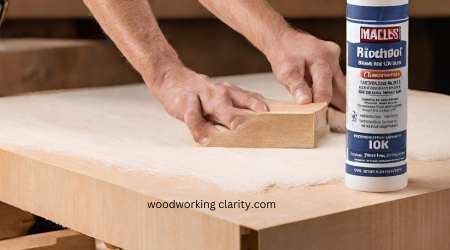
It is always a good idea to give wood glue plenty of time to dry. But sometimes, you won’t have all the time to wait, and knowing how to dry wood glue fast can make all the difference.
So, here are a few handy tips and techniques on how to get the glue to dry faster.
1. Apply some heat
As already mentioned, temperature is one of the key determinants of drying. If the weather is not hot, you can induce heat to accelerate the drying process and finish the project in less time.
You can train a hairdryer on the glued area, switch on a space heater or use your home’s HVAC (Heating, ventilation, and air conditioning) system to raise the ambient temperatures.
The heat will cause the moisture on your glue to evaporate faster, leading to a shorter drying time.
The alternative is to work outside in direct sunlight. Working outside will subject your project to a natural heat from the sun, speeding up the process.
2. Lower the humidity
High humidity is the second main inhibitor of drying. Wood glue dries much slower in humid conditions when the air has a lot of atmospheric moisture.
If you are working indoors, you can use a dehumidifier to lower the amount of water vapor in the atmosphere to acceptable levels.
Alternatively, you could use a hairdryer to raise the temperatures and eliminate moisture from the air around your project, speeding up the drying process.
Fans are also an excellent way to lower humidity. Just train one at the joint to blow air across it and eliminate any moisture around the place.
3. Use undiluted glue
Some glues often allow for diluting to make them runnier for certain applications. While diluting a glue may serve a purpose, it also introduces more moisture that the glue must lose through evaporation to dry.
The more the moisture, the longer the glue may take to dry. Leaving the glue as it is without diluting it with water will ensure it has less moisture to lose as it dries.
4. Work in a well-ventilated space
Working outside may ensure natural ventilation and quicker drying without any additional implementation.
However, if you are working indoors, you can keep the overhead fans running, open windows to increase air circulation, or blow a fan directly over the attached pieces that you want dry.
Anyone or a combination of these strategies should do the job of improving the ventilation around your workspace.
5. Use less glue
The thicker the glue, the longer it will take to dry. One way to ensure it dries faster is to keep the amounts as little as possible. Using less glue will ensure the drying process takes less time, allowing you to complete the project sooner.
There are a few ways to reduce the amount of glue you use when woodworking. One way is to use wood glue bottles for dispensing.
This will help you get the right amount of glue out without squeezing too hard and making a mess.
6. Use dry pieces of wood
Whenever possible, steer clear of damp wood. The additional moisture in the fibers will impede moisture evaporation from the glue, especially if you use water-based glue such as PVA glue.
Moisture from the glue typically escapes into the air directly from the glue, while some of it escapes through the substrate.
If the wood is already saturated with moisture, the water particles from the glue will have nowhere to pass through the wood. This can slow the drying process.
Using dry pieces of wood will ensure sufficient room for the water particles to escape, making the wood glue dry faster.
How fast does wood glue dry FAQs
How long to clamp wood glue
Leading brands like Titebond and Elmers recommend clamping an unstressed wood glue joint for 30 minutes to an hour. However, stressed joints require longer wood glue clamp time—often up to 24 hours. Remember to leave the new joint unstressed for a minimum of 24 hours to keep the boards in place.
How long does Titebond 2 take to dry
Titebond 2 dry time is about 30 to 60 minutes to dry for unstressed joints. Such joints require an additional 24 hours to cure and gain full strength. Stressed joints take longer to dry, up to 24 hours. These stressed joints generally require more than 24 hours to cure fully.
The Best Wood glue temperature range
Commonly used wood glue such as PVA and polyurethane glues dry within 10 to 25 degrees Celsius. And this temperature range falls within the standard room temperature. Any temperature lower than 10 degrees Celsius won’t allow the glue films to form properly and your wood glue won’t dry.
How Long to Let Wood Glue Dry Summary
Knowing how long wood glue takes to dry begins with understanding the basics of the glue drying process. Knowing the factors that determine and influence drying times can help you plan better for your next woodworking project or control the factors and speed up the process.
Either way, this knowledge is essential in ensuring better results. In addition, it can help you create wood projects with a strong, indestructible bond.

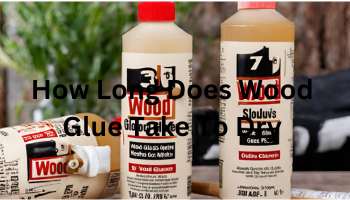





This is very informative article. I use wood glue on many projects as a hobby woodworker.
Thank you